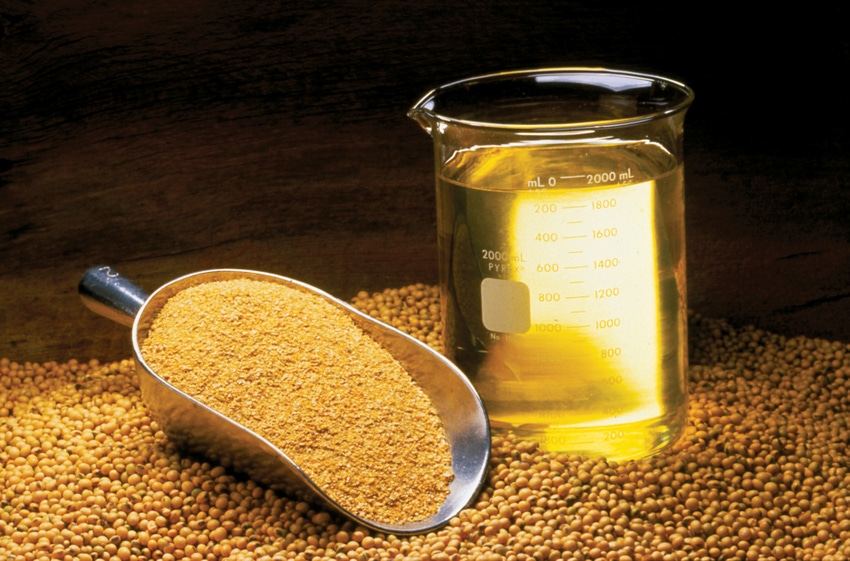Software innovation more quickly determines soybean feed value 44779
Software modification reduces time required to identify soybean feed value at variety level from three weeks to about two hours.
November 24, 2020

When the Illinois Soybean Assn. (ISA) checkoff-funded High Yield PLUS Quality (HY+Q) program uncovered up to billions of dollars of potential livestock feed value hiding at the variety level, it represented a game-changing development.
It also created a challenge: Calculating feed value for nearly 50,000 soybean samples took five people three weeks, making it difficult to get soybean quality data to farmers in time to make seed selection decisions.
ISA discovered significant differences in livestock feed value at the variety level. ISA also determined that these differences could reduce feed costs in a grow/finish swine operation by up to 40 cents per pig and nearly 3 cents per broiler, based on amino acid levels, if all farmers selected soybean varieties with high livestock feed value. This amounts to an estimated $456 million annually in improved soybean value if the bottom 50% of the soybean samples were as good as the top 50%, according to ISA research.
Much faster analysis
The solution? Dalex Livestock Solutions and a software modification that helps reduce the analysis calculation to about two hours. This means the soybean feed value analysis can be completed and data made available to livestock nutritionists and producers much faster. Soybean producers also benefit because they gain critical insight into feed value rankings at the variety level to aid in their seed selection decisions.
The Dalex software modification makes it possible to quickly compare the feed value of thousands of soybean samples, which will help the checkoff increase soybean quality and value faster for farmers, livestock nutritionists, seed companies and numerous others who can benefit from quick variety-level livestock feed value information.
“Automating the feed value analysis makes it that much easier to inform farmers which varieties are most likely to deliver high-quality soybeans and feed that can increase soybean value over time for everyone,” Dalex president Dale Downs said. “It also will benefit livestock producers as more soybean farmers factor feed value into their seed-buying decisions over time.”
Simplifying complex process
Before the software innovation, ISA followed a complex process to compare feed value:
1. Whole soybean data were converted into “virtual meal” by simulating soybean processing and removing the oil, hulls, etc.
2. A statistician identified 150 samples that represented the entire data set based on their amino acid and protein levels.
3. Five nutritionists formulated feeds around 750 representative soybean samples, entering amino acid data for each ration by hand, to see how samples compare in livestock feed in grow-finish, nursery, breeder, broiler and layer rations.
4. Then, a statistician created a model for each species and phase of production based on the results from 100 of the 150 samples of known feeding value.
5. ISA and the science team checked the estimates against actual feed values and confirmed accuracy across all samples.
Now, one nutritionist can run more than 50,000 samples through Dalex in about two hours, thanks to the software modification.
ISA statisticians then analyze the sample data to see which varieties can deliver the highest livestock feed value over time. The entire process brings a new criterion to farmers when selecting soybean seed, which the United Soybean Board adopted in a summer 2020 ad campaign: A livestock feed value score.
“This is a revolutionary development for livestock producers, seed companies, soybean farmers and our customers,” said Dr. Linda Kull, director of ag innovations for the ISA Checkoff Program. “When the feed value of 50,000 samples is calculated this fast, we can see soybean value at the sample or variety level like our livestock customers see in meal. The sample data leads to variety-level information that is provided to farmers and easily gives them the information they need to make informed variety selection decisions that support their biggest customers.”
More sustainable amino acid source
More than 70% of soybeans grown in the U.S. are used to feed livestock. In swine rations, for example, use of soybean meal has plummeted 70% over the past three decades. Soybeans have largely been replaced by synthetic amino acids and corn byproducts such as dried distillers grains plus solubles. These feed ingredient substitutes provide the critical amino acids that fuel animal growth and productivity, as do soybeans, but at a lower cost.
This increased use of substitute feed ingredients at the expense of soybean meal translates into substantial losses in soybean sales and market share in critical domestic and international livestock markets. ISA efforts to encourage farmers to plant more soybean varieties with higher feed value, combined with the new Dalex feed formulation software, will benefit both livestock and soybean producers by increasing soybean demand and providing a more sustainable source of amino acids for livestock.
Farmers can see which varieties perform best in livestock feed and order a free sample kit to get their soybeans tested at www.soyvalue.com.
ISA checkoff and membership programs represent more than 43,000 soybean growers in Illinois. The checkoff funds market development, soybean innovation and profitability efforts, issues analysis, communications and education.
You May Also Like



